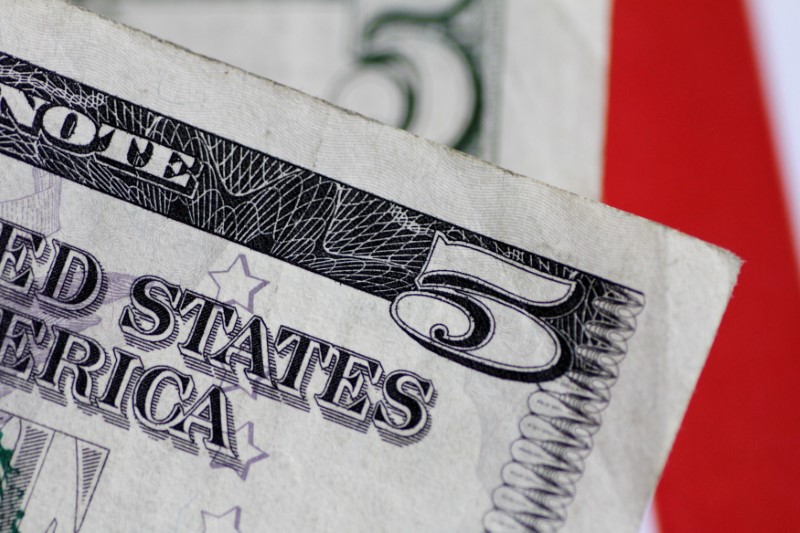Investing.com – The U.S. dollar steadied Monday, as traders awaited a speech by Federal Reserve Chair Jerome Powell later in the session ahead of Friday’s key employment report.
At 04:25 ET (08:25 GMT), the Dollar Index, which tracks the greenback against a basket of six other currencies, traded marginally lower to 100.035, after last week posting its fourth straight weekly decline and ninth in the last 10.
Dollar looks to payrolls
The U.S. dollar retreated last week after the Federal Reserve’s favorite inflation reading signaled price pressures continue to ebb, shortly after the U.S. central bank started its rate-cutting cycle.
Federal Reserve Chair Jerome Powell was set to speak on Monday to the National Association for Business Economics in Nashville, Tennessee, and is expected to elaborate on the Fed’s decision to cut its benchmark interest rate by half a percentage point earlier this month.
A survey of professional forecasters by the group, released on Sunday, cited a “monetary policy mistake” as the “greatest downside risk to the U.S. economy over the next 12 months.”
The next major data point that could guide the pace of U.S. interest rate cuts arrives on Friday in the form of the October nonfarm payrolls report on Friday, with economists expecting the US economy to have added 144,000 jobs.
“The greater focus of the Federal Reserve on the employment side of its mandate means high sensitivity of the market to the details of the release,” said analysts at ING, in a note. “If we are right with our call for a tick higher in unemployment, expect a softer dollar as markets stick to expectations for a half-point Fed cut in either November or December.”
Euro prepares for inflation release
In Europe, EUR/USD edged 0.1% higher to 1.1172, largely stable ahead of the release of flash September inflation data on Tuesday, which will be closely watched as European Central Bank officials mull whether to cut rates again in October.
German inflation numbers come in ahead of the eurozone release, and follow last week’s data showing inflation in France and Spain rose less than expected, boosting expectations for an October ECB rate cut.
“If we end the week with slower-than-expected eurozone inflation and somewhat weaker US payrolls figures endorsing a 50 bps Fed cut, then expect the euro to be one of the laggards in a weak USD environment as markets cement bets that the ECB will continue cutting in October,” said ING.
“Another short-term move to 1.1200 is possible in EUR/USD on the back of some USD weakness, but unless we see surprisingly strong eurozone inflation, a big break higher may not be on the cards.”
GBP/USD traded 0.2% higher to 1.3399, not far removed from last week’s high of 1.3430, climbing to a level not seen since February 2022.
Data released earlier Monday showed that Britain’s economy grew more slowly than previously thought in the second quarter, as gross domestic product expanded by 0.5% in the April-to-June period.
The reading was slightly weaker than a preliminary estimate of 0.6%, and was below forecasts for another 0.6% rise.
Yen hands back some gains
USD/JPY rose 0.2% to 142.44, with the Japanese yen handing back some of last week’s gains as the country’s incoming prime minister signalled monetary policy should remain accommodative.
The yen had leapt on Friday when Shigeru Ishiba, a former defence minister and erstwhile critic of aggressively easy policy won the leadership of the ruling Liberal Democratic Party.
Additionally, Japanese industrial production fell 3.3% on the month in August, while housing starts fell 5.1% on an annual basis.
USD/CNY edged higher to 7.0120, stabilizing after Beijing’s raft of stimulus measures drove a rally in China’s yuan last week, breaking below the psychological 7-per-dollar mark on Friday

